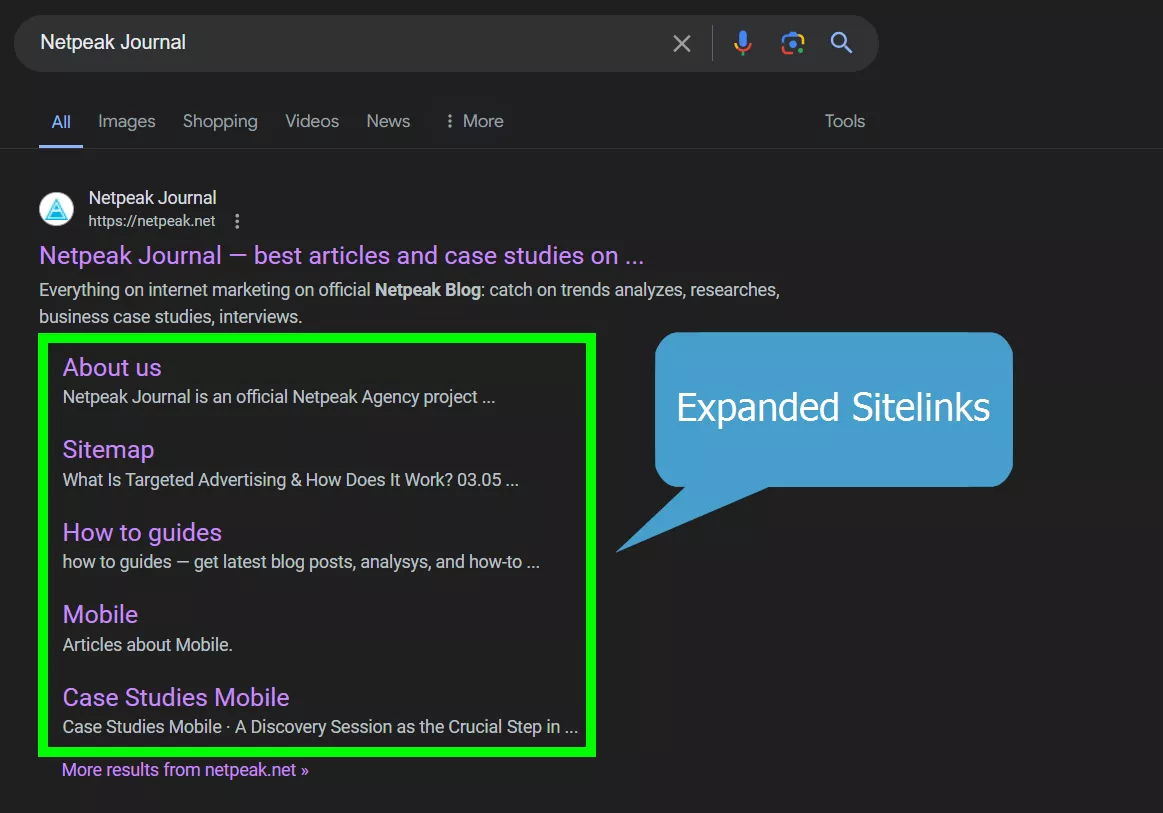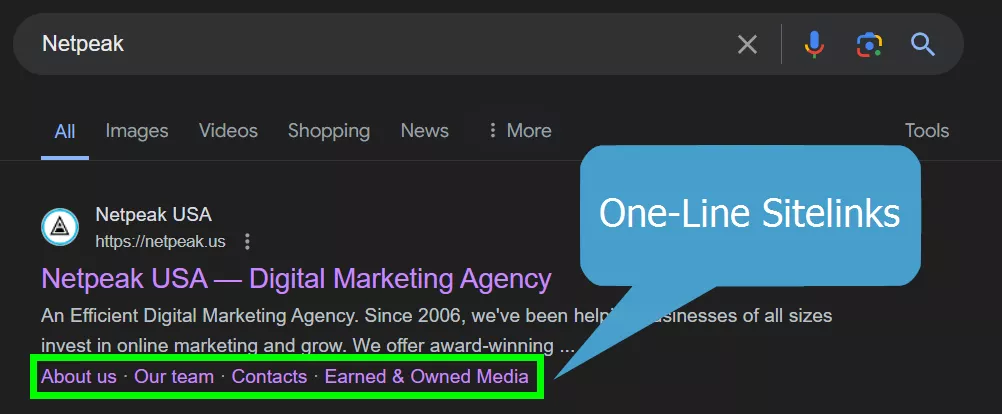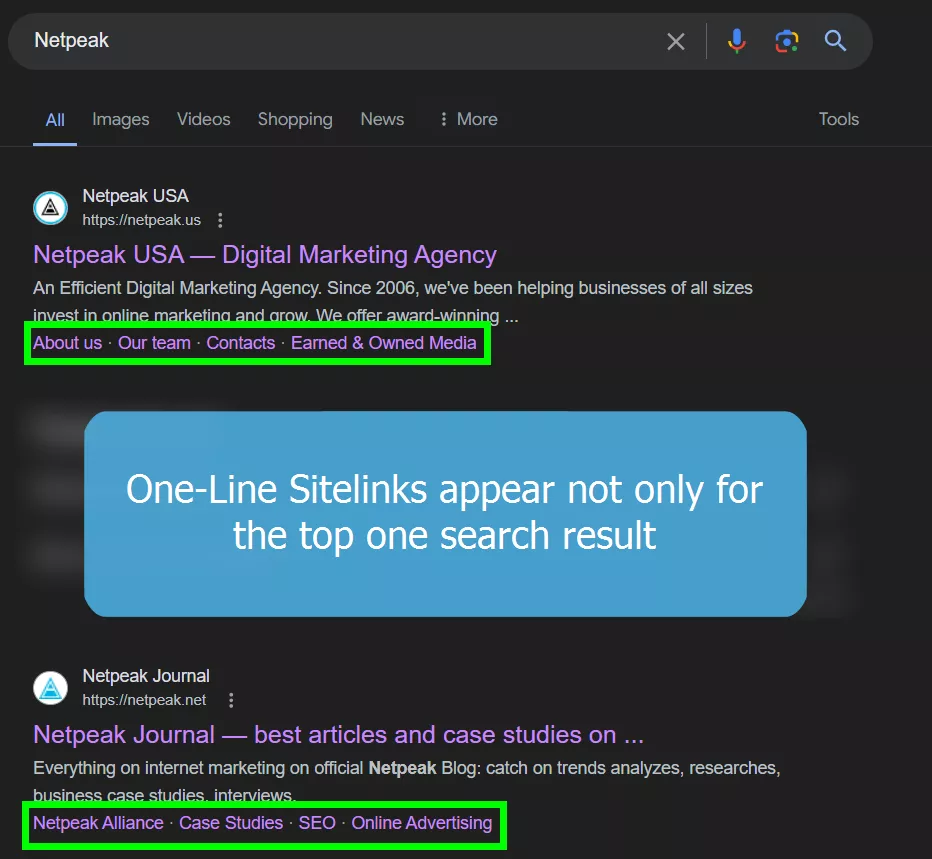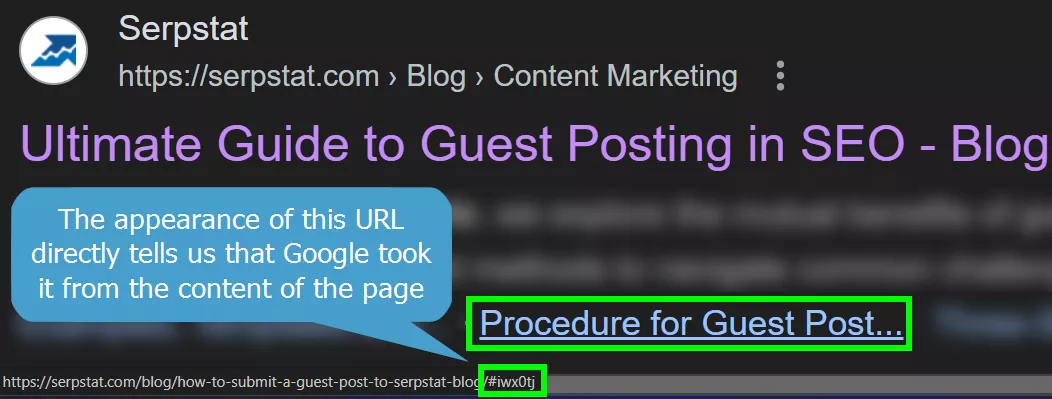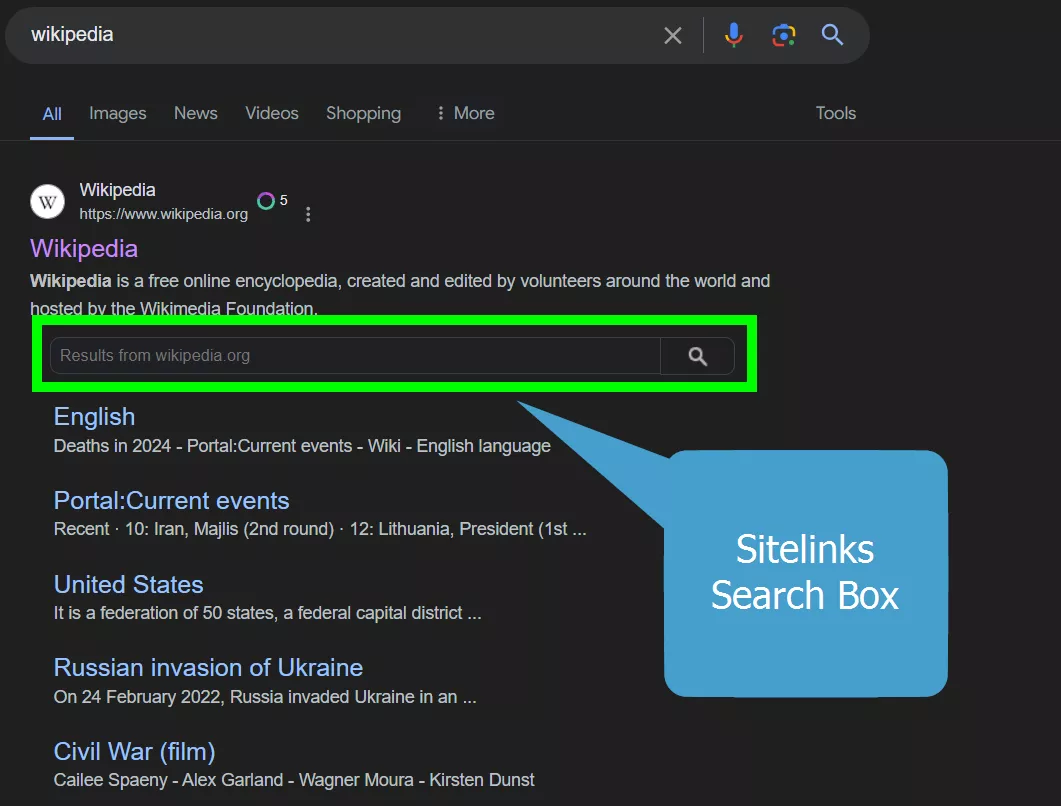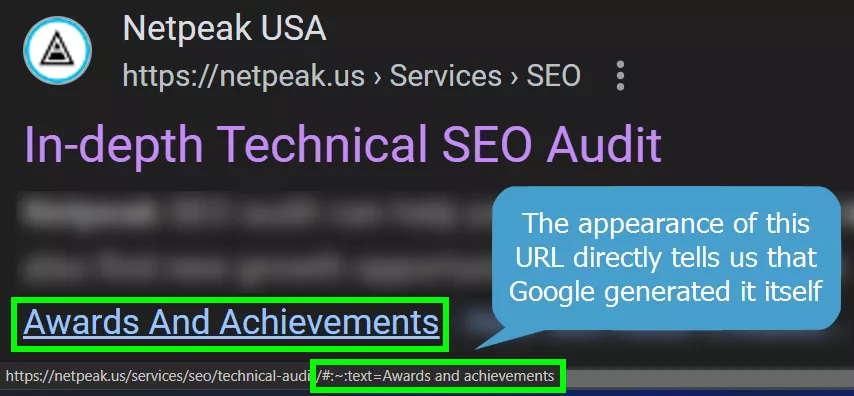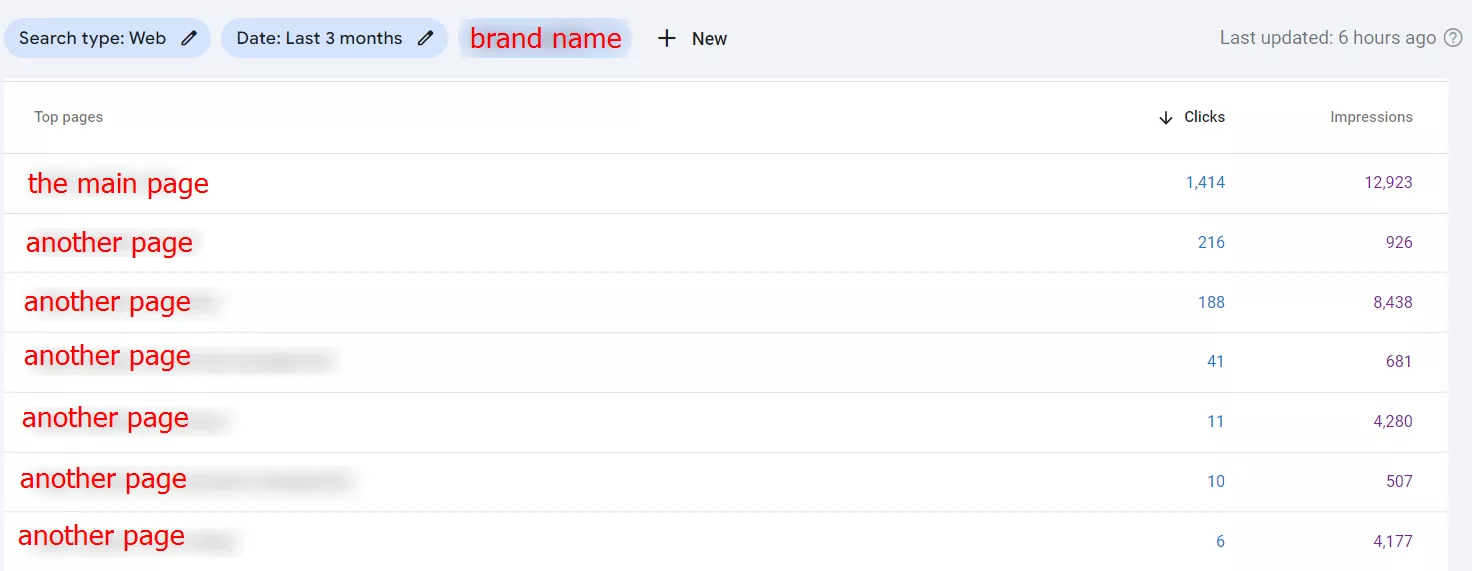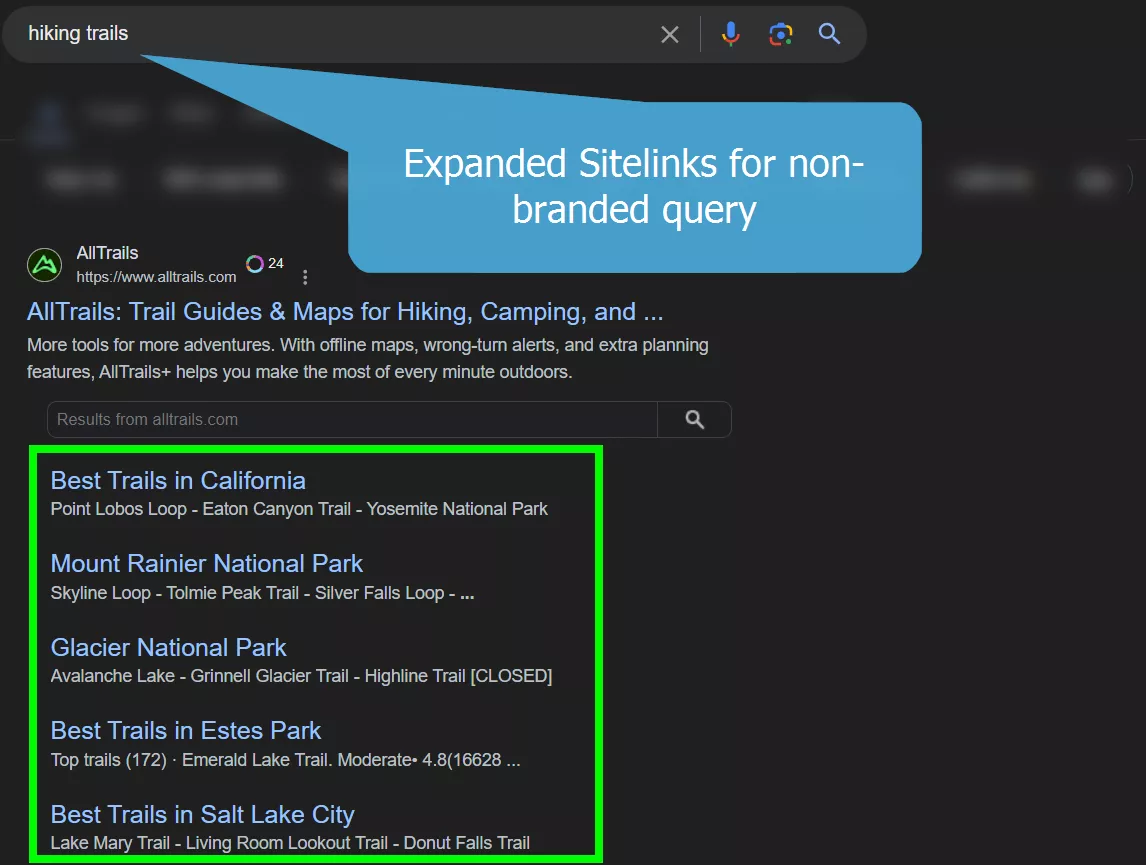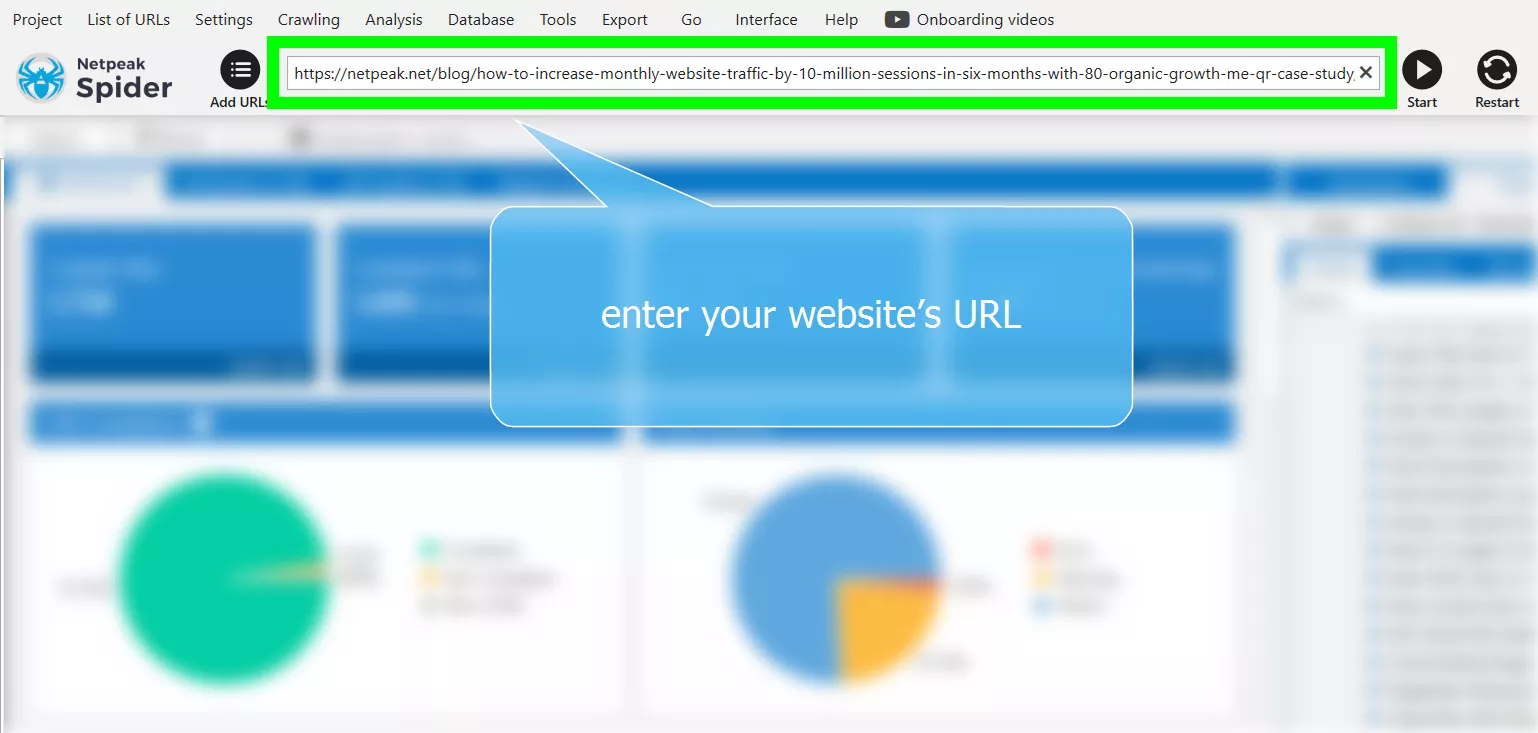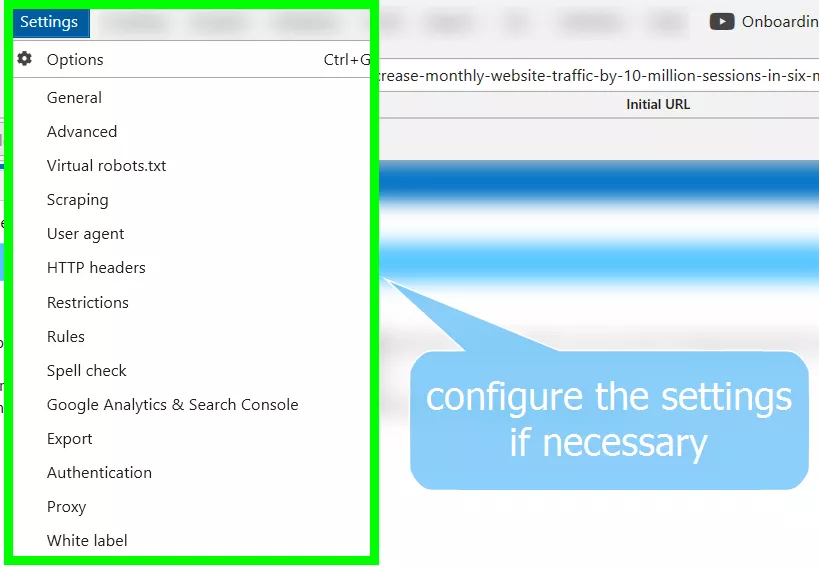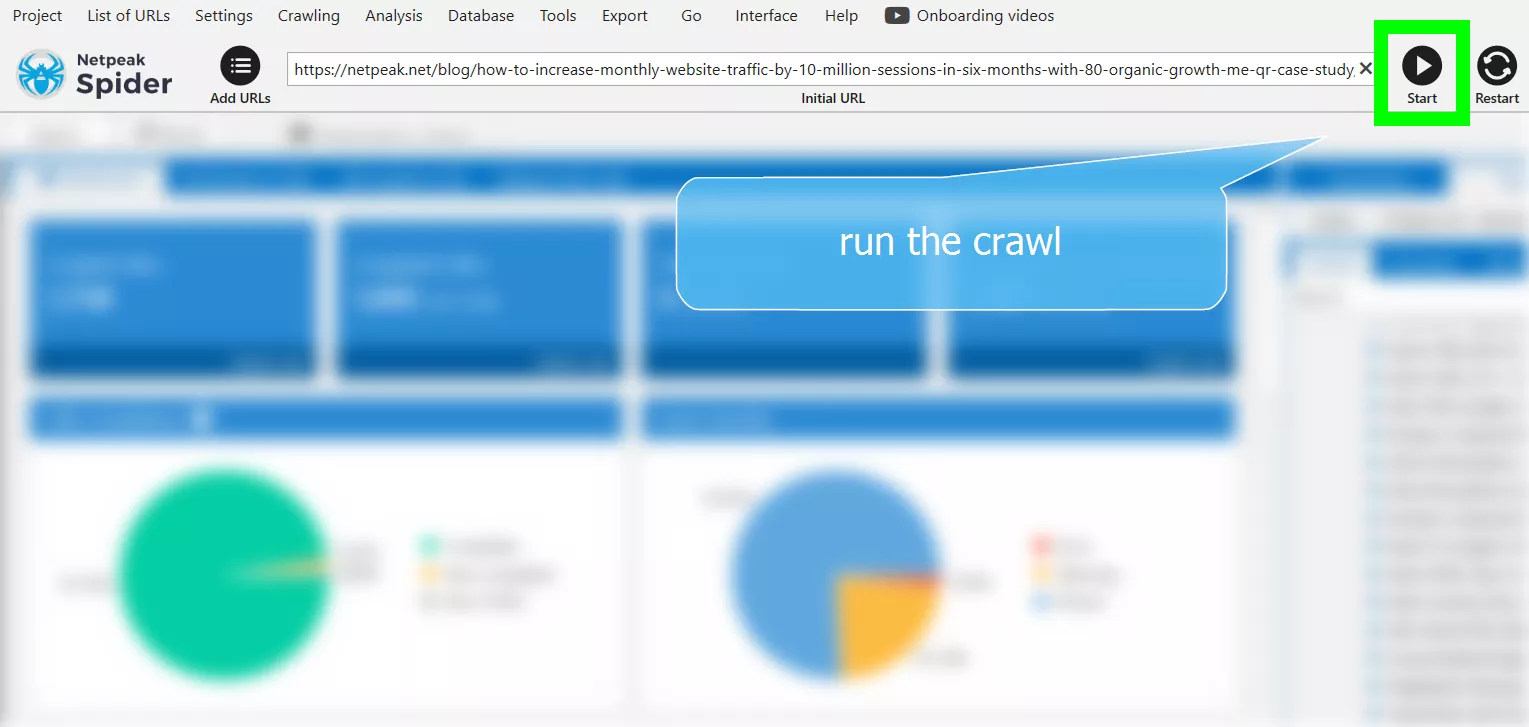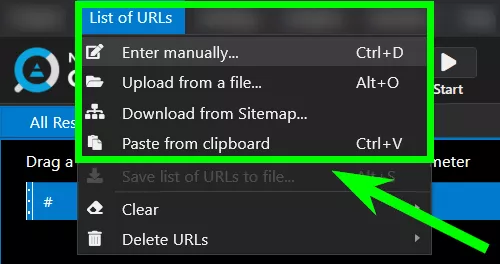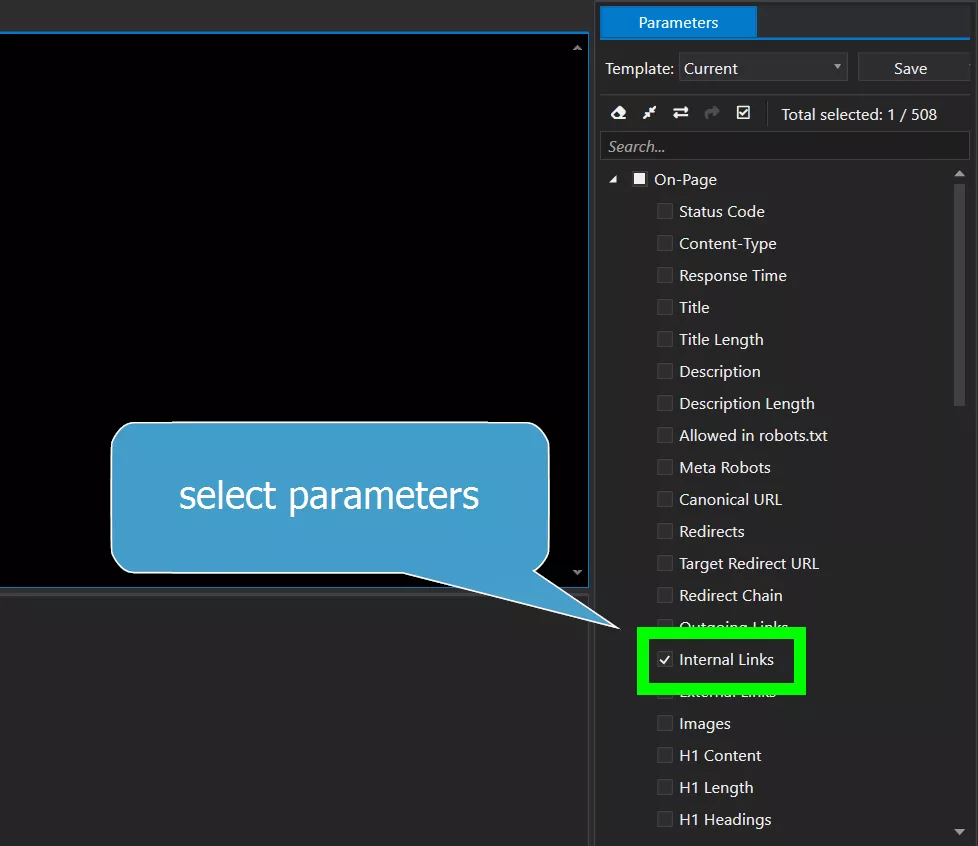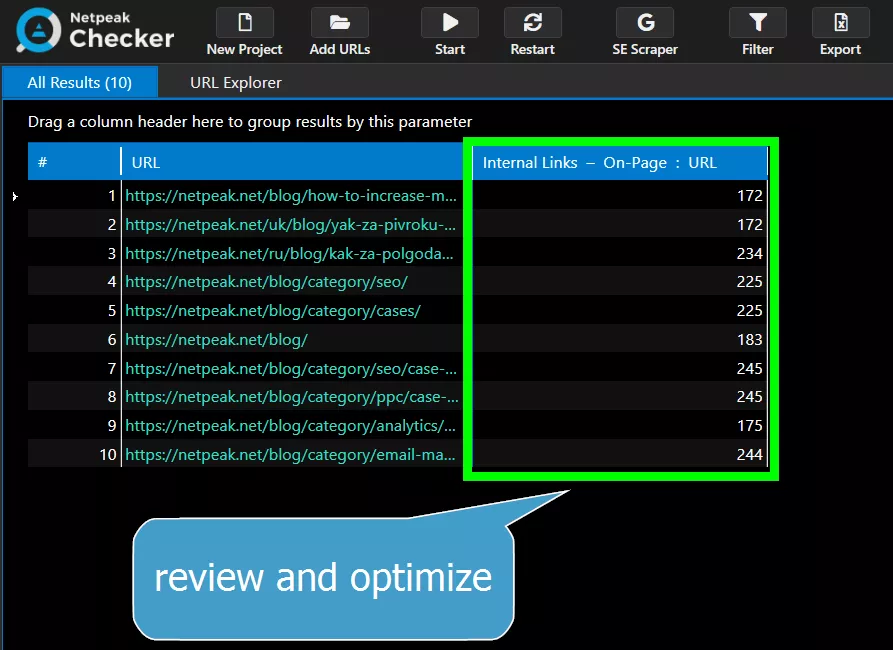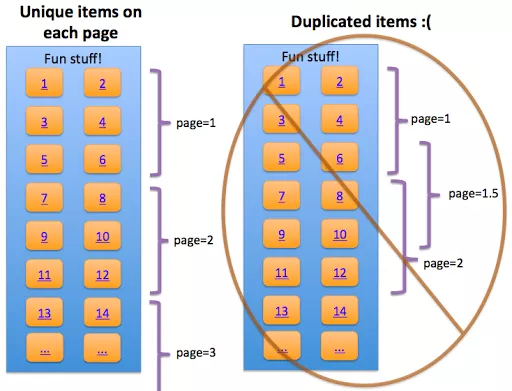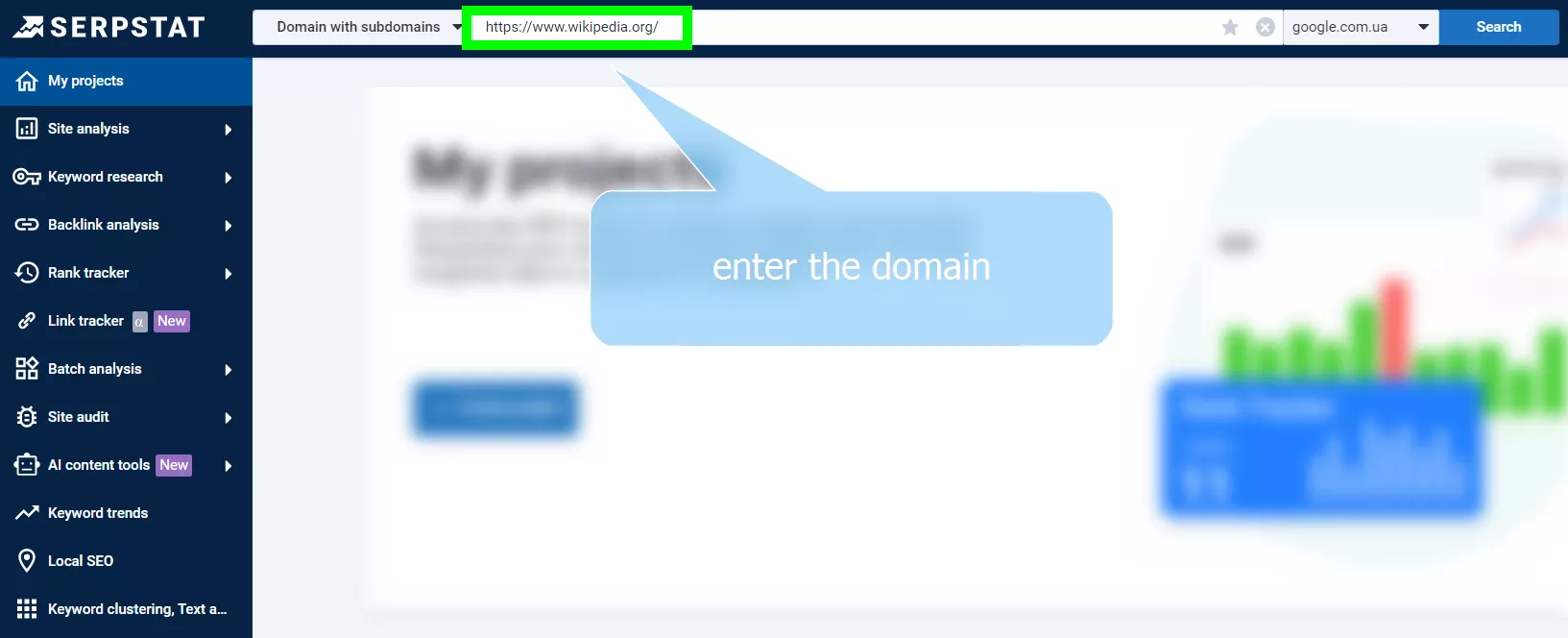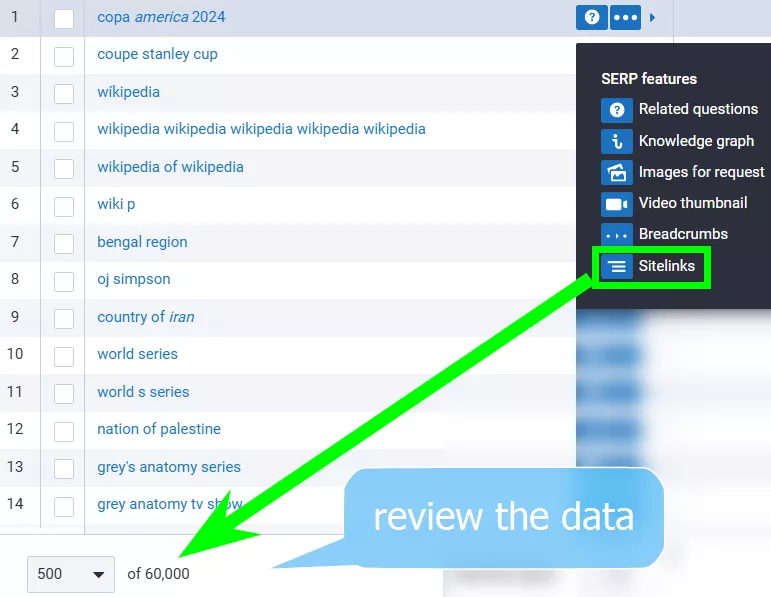Imagine if you could organically secure multiple links to your website from a single search query. Intrigued? Then join me as we explore Google sitelinks – your chance to stay ahead of the curve.
Note: This article focuses solely on SEO sitelinks or organic sitelinks. It does not discuss Google Ads sitelink extensions.
- What Are Sitelinks?
- Revolution of Sitelinks Examples
- Benefits of Sitelinks on Google
- How to Add Sitelinks in Google Search?
- How to Find Sitelinks?
What are sitelinks?
First introduced by Google in 2006, sitelinks are links from a single domain grouped beneath a text result on the search result page. These additional links, generated by Google's algorithms, allow users to quickly browse the most relevant and informative pages of a website. Their goal is to lead site visitors directly to the content they are looking for.
Revolution of sitelinks examples
Over the years, SERP sitelinks have evolved as Google worked to offer more sophisticated ways to enhance search results and improve user experience.
Expanded sitelinks
The primary type, known as expanded sitelinks, was introduced by Google in 2006. These are a bunch of links shown under the main search result, and they take you straight to particular pages on a website.
For instance, when you search for “Netpeak Journal”, you might see various related subpages right under the main link. This makes it simpler for users to find precisely what they need:
Expanded sitelinks increase the chances of a user clicking on one of the links.
One-line sitelinks
In April 2009, Google introduced one-line sitelinks, a more compact version of the original sitelinks. These show up as a single row of links below the main search result and offer fast navigation choices without cluttering the SERP too much:
This type of sitelinks is beneficial because it can appear not only for the top one search result but also others below it:
By displaying multiple links in a single search result, Google enhances the discoverability of relevant content and supports diverse user intents.
Jump-to sitelinks
In September 2009, Google announced jump-to sitelinks, designed to help users quickly navigate to specific sections of a page.
These sitelinks in Google search provide direct links to different sections of a single page, allowing users to “jump” to the part of the content that is most relevant to their query:
Jump-to links are handy for lengthy, content-rich pages. A table of contents can signal to Google to include such sitelinks, as they will navigate the user to the heading link containing a hash (for instance: https://site.com/article/#heading-name). You can go to the ultimate guide to guest posting in SEO and make sure it gets such sitelinks by adding a table of contents.
Google expanded sitelinks updated
In 2011, Google made significant updates to expanded sitelinks. This update improved the visibility and functionality of sitelinks by displaying up to twelve links in a more structured and accessible layout.
The updated format made navigation more dynamic and comprehensive: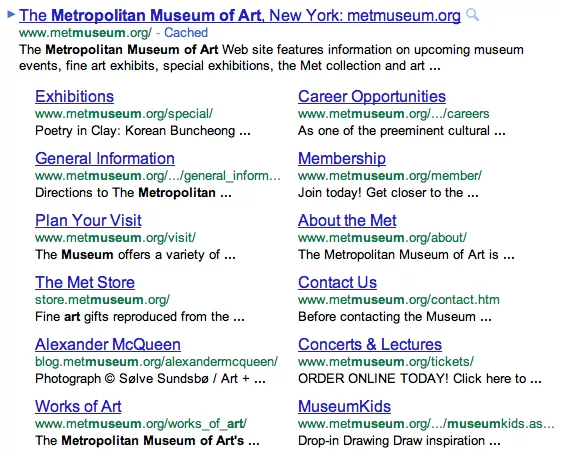
This enhancement also gave users more visibility, as Google organic sitelinks appear in two columns.
Sitelinks search box
In 2014, Google introduced the sitelinks search box, a powerful feature where users can search directly within a website from the search results page.
This search box is handy for large websites with extensive content, such as e-commerce sites or informational portals:
It enables direct searches within the site and drives more targeted traffic to specific site pages.
Note: On November 21, 2024, this type was removed from search results due to a drop in usage.
Scrolling sitelinks
In 2022, Google introduced scrolling sitelinks, a new format that appears as a horizontal list, allowing users to navigate through multiple options automatically:
It’s called ‘Scrolling’ because clicking on it takes the user to a specific text on the page instead of the beginning of the page. Scrolling sitelinks enhances the search experience by making it faster for users to navigate to the content they seek.
The implementation of this type is also connected with progress in AI language models. As Google started to understand human language better, it gained the ability to demonstrate short answers for the user’s query from the large content of the website’s pages.
Benefits of sitelinks on Google
There are several advantages to having sitelinks added for your site’s listing in the SERP.
- Increased visibility. Sitelinks significantly enhance the visibility of a website in search results. By displaying multiple links to different sections of the site, sitelinks occupy more space on the search engine results page (SERP). With more links around, your site grabs attention and users are more likely to click on it.
- Improved user experience. Instead of having to navigate through multiple pages, users can directly access the most relevant pages of your site from the search results. This streamlined navigation enhances user satisfaction, leading to longer site visits.
- Enhanced branding. When users see multiple sitelinks for a website in search results, it signals to them that the site is well-organized and reputable. This better impression can make the brand seem more authoritative and stick in potential customers’ minds.
- Easy site navigation. By providing direct links to important pages, sitelinks allow users to bypass intermediate pages and reach their desired content quickly. This helpful navigation system is especially great for big websites with lots of content.
- Time savings. Because sitelinks are shortcuts to users’ needs, they skip the maze of menus and pages.
- Reduced bounce rates. When users find what they’re looking for right away, they are more likely to stay on your site. When bounce rates are lower, visitors get more involved with your content.
- Increased CTR. One of the most significant advantages of sitelinks is their ability to boost your click-through rate (CTR).
The CTR metric measures the number of people who click on your link compared to the number of people who see it (impressions). It’s a critical metric in understanding how effectively your site is capturing interest in search results.
Sitelinks enhance CTR by providing multiple clickable options beneath your main search result, each leading to a different section of your website. This variety increases the chances that a user will find something immediately relevant and click through to your site.
For instance, consider a scenario where 16.57% of clicks on a branded query for your site do not go to the homepage but to other internal pages. This distribution indicates the presence of sitelinks, as users are directly navigating to the subpages that most interest them. You can verify this pattern through Google Search Console (GSC), which shows detailed analytics on user clicks and behaviors:
A higher CTR signifies that your site is effectively meeting user needs directly from the search results, leading to increased engagement and potential conversions.
If you're running a SaaS product and want to align your site structure, content strategy, and user flow for maximum visibility, explore our SAAS SEO Services. Designed for SaaS businesses, this service ensures your SEO setup supports both sitelink visibility and scalable growth.
Later in this article, I’ll show you one more method of checking for the presence of sitelinks on your website. Now, let’s explore practical strategies to optimize your site for sitelinks.
How to add sitelinks in Google Search?
Google’s algorithms automatically determine and generate sitelinks. There’s no direct method to influence their presence, for instance, through markup. However, there are several recommendations and best practices that can increase the chances of sitelinks appearing for your website on Google search results.
Unique website name
In most cases, sitelinks appear for branded searches, as they help users find specific sections of a well-recognized site. However, there are exceptions where sitelinks can appear for non-branded queries as well:
A unique website name that contains a non-branded query guarantees easy brand identification, which increases the chances of getting sitelinks for the site.
Logical site structure
Google likes websites that are easy to get around and have a clear hierarchy. This means having a well-thought-out navigation menu and organized content.
By following best practices for site structure, you can improve your chances of getting sitelinks. For more details, check out how to create SEO-friendly website architecture, and make sure your site is optimized.
To ensure your site's structure and technical readiness are flawless—even before launch—consider conducting an In-depth Technical SEO Audit. This comprehensive check uncovers hidden issues that may block sitelinks and other advanced Google features.
Sitemap.xml
A sitemap helps search engines figure out how your website is organized. It provides a roadmap of your site’s content, making it easier for Google to identify and generate sitelinks.
On this note, check the beginner’s guide to Sitemap.xml for more information.
Structured data
Structured data is a way of organizing and tagging your website’s content so that search engines better understand what your pages are about. Specifically, having well-defined breadcrumb markup is influential for sitelinks, as it helps Google understand the hierarchy and navigation paths within your site.
Structured data also supports features like rich snippets and enhanced search results, and these will further improve your site’s visibility.
Internal linking
Good linking between pages on your site helps search engines see how everything’s connected and organized. A well-structured internal linking strategy ensures that link equity (often referred to as “link juice”) is distributed effectively across your site, making it easier for Google to identify influential pages and potentially feature them as sitelinks.
To audit and improve your internal linking strategy, use Netpeak Spider and Checker. These tools can analyze your internal link structure and help your most vital pages get the attention they need.
Calculate your internal PageRank with Netpeak Spider
Netpeak Spider allows you to calculate the internal PageRank of your website’s pages.
Internal PageRank is a metric that helps you understand the importance of different pages within your site based on their link structure.
To calculate internal PageRank using Netpeak Spider:
- Get the tool from the Netpeak Software website and install it on your computer.
- Open Netpeak Spider and start a new project by entering your website’s URL.
- Adjust the settings to suit your needs, such as excluding specific pages if necessary.
- Initiate the crawling process to scan your website’s internal links.
- After the crawl is finished, go to the internal page rank calculation section. It will give you the option to see the internal Page Rank (PR) for all crawled URLs.
- Once you get the result, use this data to identify key pages that should be optimized for better internal linking.
Using a PageRank checker is crucial for optimizing your website’s internal links. This, in turn, increases your chances of earning sitelinks.
To learn more about this metric, we have an in-depth article that discusses what PageRank is and how to find out its value.
Enhance link juice distribution with Netpeak Checker
The Netpeak Checker helps you enhance the distribution of link juice by providing detailed insights into your internal link amounts.
To optimize internal linking with Netpeak Checker:
- Get the tool from the Netpeak Software website and install it on your computer.
- Open the Netpeak Checker and set up a new project with the URLs you want to check.
- Choose the parameters you want to analyze. Here we are interested in internal links.
- Start the analysis to gather data on your internal link amounts.
- Use the results to identify areas where link juice distribution can be improved. Focus on ensuring that you have enough internal links to important pages.
If you see that some pages checked through the internal link checker have fewer links than others, review these pages. And then, consider the possibility of adding links from them to the pages that need more PageRank.
Relevant anchor text
The words you use to link to a page (anchors) should reflect what that page is about. That way, it’s clear to both users and search engines how pages are related.
Descriptive title and heading tags
Metadata helps search engines understand the main topics and organization of your content, making it easier for Google to generate sitelinks that accurately represent your site’s structure.
Title tags should be clear, concise, and reflect the content of each page. Heading tags like H1, H2, etc., should be used logically to organize content and emphasize important sections.
Other recommendations
SEO is a multifaceted field, and gaining sitelinks involves a comprehensive approach to website optimization. Here are a few more factors to consider.
- Fresh and quality content is key. Regularly update your site with high-quality, relevant content to keep it engaging and informative. Updating your content regularly tells search engines that your site is active and trustworthy.
- Avoid duplicate content. This is critical because having duplicate content can confuse search engines and make your SEO less effective.
- Focus on overall brand recognition. A well-recognized and reputable brand is more likely to earn sitelinks. Building a strong brand presence through SERM (Search Engine Reputation Management) strategy and high-quality content enhances your site’s credibility and visibility.
By focusing on these comprehensive SEO strategies, you can improve your chances of earning valuable sitelinks and thereby boost your site’s performance in search results.
How to find sitelinks?
As promised, let’s discuss how to verify the presence of sitelinks on any website. For this, we will use Serpstat, a powerful SEO tool that provides comprehensive data on search engine results.
To check for sitelinks using Serpstat:
- Sign up for an account and log in if you don’t have a Serpstat account yet.
- Type the website’s domain name into the Serpstat search bar to check for sitelinks.
- Choose the search engine (e.g., Google) where you want to check for sitelinks.
- Click “Search” and go to the “Keywords” section.
- Click “Filter”, and select “SERP features – Contains all – Sitelinks”.
- Now, you will see the list of keywords that have sitelinks. Use and analyze this data. For instance, here we can see that 100% of top Wikipedia keywords have sitelinks.
Conclusion
- Sitelinks are additional links that appear under your main search result. Their purpose is to provide direct access to various sections of your site.
- You can significantly enhance your website’s SEO performance by using sitelinks to boost your click-through rate (CTR).
- Sitelinks were introduced by Google in 2006 and have evolved over the years. There are various types, such as expanded sitelinks, one-line sitelinks, and jump-to sitelinks, and each offers unique benefits to enhance user experience and visibility.
- To increase the chances of getting Google SEO sitelinks for your site, focus on having a unique website name, logical site structure, a comprehensive sitemap, and structured data. It is also critical to have relevant internal link anchor text, add descriptive title and heading tags, and follow general SEO best practices.
- Tools like Netpeak Spider & Checker can help you optimize your internal linking strategy and distribute link juice effectively across your site.
- To check if your site has sitelinks, you can use tools like Serpstat, which allow you to analyze search results and verify the presence of sitelinks for your domain.
FAQ
How to change sitelinks in Google Search?
You cannot directly change sitelinks in Google Search. Google’s algorithms automatically determine which links to display. However, you can influence them through sitelinks best practices.
How many sitelinks can you have?
Google typically displays up to six sitelinks for a website, though the exact number can vary. Expanded sitelinks may show more, while one-line sitelinks show fewer links under the main result.
What can I do if sitelinks are not showing up?
If sitelinks are not showing up, ensure your site has a clear, logical structure, and use internal linking effectively. Optimize titles and headings, create a comprehensive sitemap, and implement structured data to enhance your site’s visibility.
Can I manage sitelinks in the Search Console?
No, you can’t. Sitelinks are controlled by Google’s algorithms and are not something you can manipulate within the Search Console interface.
How to add sitelinks in WordPress?
You cannot directly add sitelinks in WordPress. However, you can use Google sitelinks tips to improve your website’s SEO, and this will increase the likelihood that Google will display sitelinks. These Google sitelink best practices apply regardless of the website builder you use.
Related Articles
How to Set Up Consent Mode in GA4 on Your Website with Google Tag Manager
Let's explore how to properly integrate consent mode in GA4, configure it for effective data collection, and at the same time comply with GDPR and other legal regulations
Display Advertising Effectiveness Analysis: A Comprehensive Approach to Measuring Its Impact
In this article, I will explain why you shouldn’t underestimate display advertising and how to analyze its impact using Google Analytics 4
Generative Engine Optimization: What Businesses Get From Ranking in SearchGPT
Companies that master SearchGPT SEO and generative engine optimization will capture high-intent traffic from users seeking direct, authoritative answers

